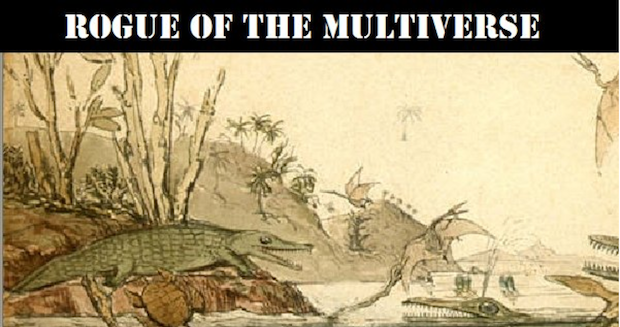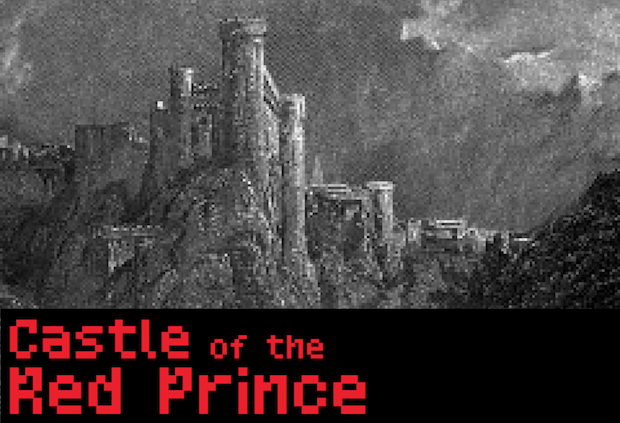IF Only: The Works of CEJ Pacian
Exploring a decade's work
"Hello," he adds, a moment later. "I think I've found the way in. A small metal door with a fiendish puzzle lock."
>x lock
There are a large number of small moving parts."Yes, quite fiendish indeed," Peyton says. "And very intricate."
He draws back a foot and then kicks the door hard. The puzzle lock comes apart with a twang. "Too intricate for its intended purpose, really. Let's head down when you're ready." — Love, Hate, and the Mysterious Ocean Tower
CEJ Pacian is a versatile and prolific IF author, writing with many different tools, mechanics, story lengths and genres. Playing through Pacian's catalog, I get the sense of an author impatient with intricate puzzle locks that get in the way of story; an author constantly looking for new ways to design around the conventional limits and boundaries of text adventures.
Sometimes that means streamlining the input types, focusing on a few key pieces of the world model, decreasing the friction of interacting. Sometimes it means moving away from the typical prefabricated world map, setting aside compass directions or using randomization for some parts of the game space. Very challenging puzzles are rare, and so are moments when one feels one is fighting the parser for control. Meanwhile, the adventures are rarely set in the real world, and Pacian's world-building often combines the technology and tropes of multiple eras.
Over time, Pacian's design has gotten more varied and more confident, often making a strong break with typical IF conventions.
One of Pacian's earliest IF games, Gun Mute (parser, TADS 3, 2008) casts the player as an unspeaking gun-slinger in a post-apocalyptic wild west with robots and an undercurrent of romance. (No, not like Westworld.) It's a combat puzzle game in which each fight has a correct solution. On that basis alone, it would be a fun short puzzle game. But the charm of its writing, its world, and its surrounding narrative elevates it above many other combat puzzle pieces.
Gun Mute replaces conventional compass movement with the idea that you always have to keep moving forward, from one gunfight to the next. The narrative and the navigational space are really one and the same. And the epilogue is delightful.
Rogue of the Multiverse (parser, 2010, TADS 3) puts the protagonist in detention, under the supervision and control of the reptilian Doctor Sliss, who has something to say about almost everything you try to do. She's unfortunately quite speciesist and not too clear on the difference between humans and apes — she assumes you are obsessed with bananas, among other things — but she's good fun. Sliss' snarky commentary earned the game a Best Individual NPC XYZZY.
As in Gun Mute, the early stages of the game are intentionally, pointedly linear, allowing the player to move only forwards or backwards (and in practice, generally forwards) through the various hallways of the prison.
Soon, however, you become part of Sliss' experiments, which involve transmitting you to distant planets. And there, like a miracle, the map opens out in every direction, on a procedurally generated grid environment where you can roam as freely as you like. Many of the items you find are loot, and others are autonomously roving NPCs, whether dangerous or not. You are now in a textual roguelike, except that in place of permadeath, you will simply be pulled back to Doctor Sliss' laboratory any time you manage to get yourself killed. Whenever you go back to the lab, you revert to relative directions again, with left and right reassigned depending on where you're coming from.
The game offers several more twists past that point, including one of the more satisfying vehicular chase scenes I've seen in IF. That set-piece mainly works because by that time Pacian has thoroughly trained the player in relative navigation styles.
If Rogue of the Multiverse appeals to you, you might also like Superluminal Vagrant Twin (covered previously).
Castle of the Red Prince (parser, Inform, 2013) takes apart traditional movement entirely, because you inhabit its space as a dreamer rather than as a physical being.
As the opening says:
Even after you ended your studies into the arcane, the nightmares continued to get worse.
You see Amaranth in these dreams - a small and distant land that claims some vague portion of your ancestry - and the tyrant of a prince who rules it. You see everyone you have ever loved, everything you have ever cherished, shrivel and wither and fade - touched by his corrupting shadow.
The Red Prince must die. You realise that now.
Only then will the dreams stop.
You can examine anything in Amaranth at any time, bringing new areas into mental scope. Many of the other game elements are familiar from other games: a handful of useful inventory items, some NPCs who can answer questions, helpful books that suggest ritual solutions to some of your problems. The navigation, however, changes up the whole pace of the game. As soon as you get an idea from reading something in one location, you can immediately execute the puzzle solution in another place entirely, without having to walk across five intervening rooms to do it. That one change creates a surprising feeling of power. The player is effectively omnipresent, while all the NPCs you encounter, even the demonic villain, are apparently limited to action in just one place.
I appreciate how much this design respects my time, as well: it's so efficient that it lets the player pull together the elements of a short story and take four or five important actions within ten or so minutes of gameplay.
If you like Castle of the Red Prince, I recommend Caleb Wilson's similarly telescopic Lime Ergot as a chaser.
And if you want to try an even more esoteric navigation style, try Dead Like Ants, Pacian's game about a society of insects that relies on a cylindrical directional system.
Alongside all these alternate worlds and alternate ways of transporting oneself through them, Pacian has done a lot of games that focus on conversation or personal interaction:
Weird City Interloper (parser, Inform, 2014) is the story of detection in a bizarre fantasy realm. You make progress entirely by asking characters about keywords: each new fact becomes the key to a fresh lock. In this way it simply skips past the conventional text adventure design task of putting a story beat in the same location where the player will find the key, scroll, or magic gem that would let them progress to the next stage. Weird City Interloper is about conceptual progress along the same lines as Toby's Nose.
Possibly the only complaint I have about this one is the title itself: the "weird" in "weird city" doesn't quite convey just how strangely imagined this location really is. The first person you talk to is the barnacle that guards the city gates: this is not a metaphor. Necromancers prevail. Rats offer tours.
If you enjoy Weird City Interloper, I also recommend Porpentine's Contrition, which it directly inspired.
Snowblind Aces (parser, TADS 3, 2007). Snowblind Aces is an early work, and probably not objectively as well-written or tightly designed as some of the other works on this list.
All the same, I have a huge soft spot for it, in large part because it explores a genre and an interaction style so rarely covered in IF. You are a fighter pilot, back in the era of triplanes. You and your archnemesis the Scarlet Baroness have gone down in the snow, and must somehow survive together. Do you trust her? How much are you willing to tell her about yourself? How much will you rely on her to do what she says? Pretty much the whole game consists of dialogue between you and the Baroness; the decisions you make determine which of several extensive epilogues you unlock, and what kind of relationship you and the Baroness ultimately pursue.
The earliest descriptions establish what kind of interaction to expect:
The Scarlet Baroness is a tall, imposing woman with long, fiery red hair and an eyepatch. She's clad in black leather and a thick fur. You have her full attention.
The conversation is tropey banter rather than human realism, but there are so few IF games that go anywhere near the old-style romance/swash tropes on display here, they feel reasonably fresh anyway. And if you enjoy the back-and-forth between characters here, you may also like Pacian's other game Walker and Silhouette, involving flapper-era detectives.
Indeed, the flirty antagonism of characters who are both competitors and potential lovers is another hallmark of Pacian's work, appearing in some form in Rogue of the Multiverse and Love, Hate, and the Mysterious Ocean Tower as well; and while the Prince in Castle of the Red Prince is definitely evil, his greeting when you first appear is not as simply hostile as one might have expected.
Perhaps that's another reason I find Pacian's assorted worlds so enjoyable to explore: the characters often feel affection, respect, and liking, as well as desire, even for their opponents. The possibility of a humane connection is always there.
Jetbike Gang (Twine, 2015) is an ultra-controlled entry for Porpentine's TwinyJam. Submitted games had to be no more than 300 words. For interactive work, that's an extremely tight scope, but Pacian uses it deftly to build a widely-branching piece about police brutality in a near-future world. No words are wasted; every one is doing maximum work.
It's also very different from most of the rest of what Pacian has written — and nothing could be more characteristic.
*
[Disclosures: Emily has never to the best of her knowledge met CEJ Pacian. She has met Porpentine. More generally, Emily Short is not a journalist by trade and works professionally with various interactive fiction publishers. You can find out more about her commercial affiliations at her website.]






